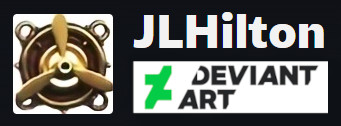
I recently finished the main story in GOD OF WAR. Near the end of their journey, Kratos and Atreus enter Jötunheim and discover a wall carved with runes and images. Some depict Kratos’ wife and Atreus’ mother Faye. Others show scenes from the game. Some, crumbling away or partially hidden beneath a red curtain, seem to hint at things to come in a sequel.
The writing on the wall is made up of symbols from the Elder Futhark. Dating back more than 1,500 years, versions of this alphabet were used for centuries by Norse, Germanic, Anglo-Saxon and Scandinavian people, including Vikings, and inspired J.R.R. Tolkien’s Cirth script.
When I started playing GOD OF WAR and met the Stranger, I saw that the red runes across his back spelled the word “cursed.”


Source: https://en.wikipedia.org/wiki/Elder_Futhark
So, I thought it likely that the runes carved in Jötunheim would also say something and were not just random decorations. Here are some I’ve managed to translate.
This section of the wall shows the final battle between Kratos and Baldur. One side says “Baldur,” but the runes beside Kratos spell “Farbauti.”

In Norse mythology, Farbauti was the husband of Laufey and father of Loki. One translation of the name Farbauti is “cruel striker.”
There are some runes above a carving of what looks like Faye’s funeral pyre. But they don’t translate into English, like Baldur’s “cursed” tattoo. Plugging them into Google translate tells me they are Icelandic and say “in death comes defender finally back to Jotunheim I have a war.”
According to notes in the game wiki, they are supposed to mean, “In death, the guardian will finally come back to Jötunheim in the hands of the einherjar.” However, there’s not actually an “R” at the end of “einherja” on the wall.

In Norse mythology the “einherjar” (with an “R” at the end) are those who die in battle and are taken to Valhalla by valkyries. The einherjar prepare for Ragnarok when they will join in a huge battle between the gods and the forces led by Surtr, a fire giant from Muspelheim.
But using Google translate with just the word “einherja” (without the “R”) translates to “champions.” Kratos and Atreus? So maybe a better translation is “in death, the guardian returns to Jotunheim in the hands of (her) champions.”
There are some phrases just above the red curtain (in the blue area of the picture below). These can be translated to “blood of fathers blood of gods” and “secret summit errand found.”

This seems to refer to the journey Kratos and Atreus took to the hidden summit in Jötunheim. But does “errand found” refer to the quest they completed or to a new mission – to vanquish the enemies of the giants?
I wonder if the entire journey was not predicted by Faye so much as set up by her, to show them not just who she really was, but what happened to her people and why Kratos must do what he does best – kill gods.
Beneath the red curtain we are given a glimpse of what looks like Atreus holding a fallen Kratos, though the man is wearing a different garb than the “Farbauti” we saw earlier.

The word above Atreus is “andlat” which translates to “death” in Icelandic. The runes to the top right spell “foður” which means “father.” Another word near the pair seems to be “hormui” which translates to “mourned.”
Slightly hidden by Kratos, near the bottom, are runes that spell “svik” which translates to “betrayal.”
Words spiral from Atreus’ mouth, possibly a song, spell or lament. I’ve read online that some players think this is the birth of the Midgard serpent, flowing from him. Others think it’s not Kratos at all but Odin, also known as the “All-Father.” But why would Atreus mourn the death of Odin?
In a game that offers resurrection stones, it doesn’t make sense that Kratos would actually die. But after battling Baldur, there is a conversation between Kratos and his son, where he admits that he would die if it meant that Atreus would live.
It’s also possible that Kratos chooses to die for some other reason, such as being with his wife Faye or being taken to Valhalla by the Valkyries to face Odin himself. Or — like Faye’s death — to set necessary events in motion.
If we move past the red curtain, the rest of the wall seems to be damaged and crumbled away. This could simply be a way for the developers to hide what’s to come. Or it could be symbolic of the idea that the future is not “set in stone” and that Kratos and Atreus may still change their fate.

From the bits of runes that can be made out, there’s a portion that refers to “Laufei” (aka Faye or Laufey) and seems to repeat, in three ways, the idea of trusting her and doing what she wanted them to do. This is similar to Atreus’ lines in the game when he stands in front of the red curtain and says, “If she had a plan for us… I trust it. Whatever it is.”
Then we have a little area that shows Atreus aka Loki with his bow and quiver, traveling with three wolves. The runes are hard to make out, thus hard to translate, but could be referring to war, fate, anger and wolves.

In Norse myth, Loki is the father of the wolf Fenrir, who is the father of Skoll and Hati, the wolves who devour the sun and moon at the beginning of Ragnarok. This carving could be a reference to Atreus’ in-game ability to summon three wolves with the magic of his Talon Bow or it could suggest that Atreus will have three actual wolf companions in a sequel.
When Kratos and Atreus defeat Baldur, snow begins to fall. When the two re-enter Midgard after leaving Jötunheim, the world is covered in snow. Brok the dwarf calls it Fimbulwinter. In Norse mythology, this is a harsh season that heralds the end of the world.
Ragnarok, the doom of the gods, is coming.
Here’s another interesting item of note, nothing to do with the Jötunheim prophecy wall but the shrine to Bergelmir. It shows a man with a long, pointed beard and a spiral on his left arm, similar to Kratos.

The runes above his wife’s head spell “Nal,” which in Norse mythology is another name for Laufey.
GOD OF WAR doesn’t follow mythology exactly, so it could be that this Nal is supposed to be an entirely different person. Or…

Is it possible that Faye is the mother of all giants? Is Kratos actually Bergelmir? Will he go back in time, find Faye, and become the parents of all frost giants? Did Faye know who he really was when she met him, because she knew him from her past?
There may be a deeper meaning in Bergelmir’s shrine being the last and final shrine, found in Tyr’s secret chambers beneath the Realm Travel Room, to complete the More Than Myth labor.
According to one fan theory, Kratos will turn out to be Tyr, not Bergelmir. Tyr is depicted in a tapestry sporting a beard similar to Kratos’ and accompanied by a woman who looks similar to the image of Laufey (Faye) in the Jotunheim mural.

In Tyr’s vault, there’s pottery decorated with an image of Kratos. References to various lands – Greece, Japan and Egypt – visited by Tyr are seen during the ride down into the vault and again on the missing panel of Tyr’s Jotnar shrine, found in Odin’s chamber (see below, clockwise from top right: Greek omega, triskele, Japanese tomoe and Egyptian eye of Horus).
The triskele or triskelion is sometimes called a “Celtic spiral” but spirals carved on the megalithic tomb of Newgrange in Ireland, built around 3200 BCE, appear before the Celts are thought to have arrived in the area. Spirals and triple-spirals are also found on ancient Greek and Maltese vessels as far back as 4400–3600 BCE. But symbols of three, such as the triple horn and the valknut, are common in Viking artifacts, so I wonder if the game devs represented Midgard with the triskele symbol – implying that Kratos began in Greece (omega), moved to Midgard (spirals) and that the next game will take him to Japan (tomoe).
There are rumors that the game developers want to take God of War into Egypt and other lands. Could these be hints to Kratos’ future/past as Tyr?

GOD OF WAR suggests that time travel is possible. Mimir mentions that during Ragnarok, the serpent Jörmungandr will fight Thor and get knocked back in time before its own birth. Past and future is “a matter of perspective” he tells Atreus when they find the Jotnar shrine to Surtr in Muspelheim.
But, based on the lore in the game, Tyr is the son of Odin and Mimir seems to have known him. Kratos is the son of Zeus and, as far as I know, Mimir doesn’t recognize him. Though, that doesn’t necessarily mean anything, because we know Mimir can be bewitched, as he was by Freya, and not be able to talk about things.
The idea of being a “good god” is a significant theme in GOD OF WAR. I think it would be an incredible story arc for Kratos if, after all he’s done, he becomes beloved Bergelmir, king of giants, or Tyr, who brought peace and justice.
~ J.L. Hilton
Connect, support, comment or contact the author here







